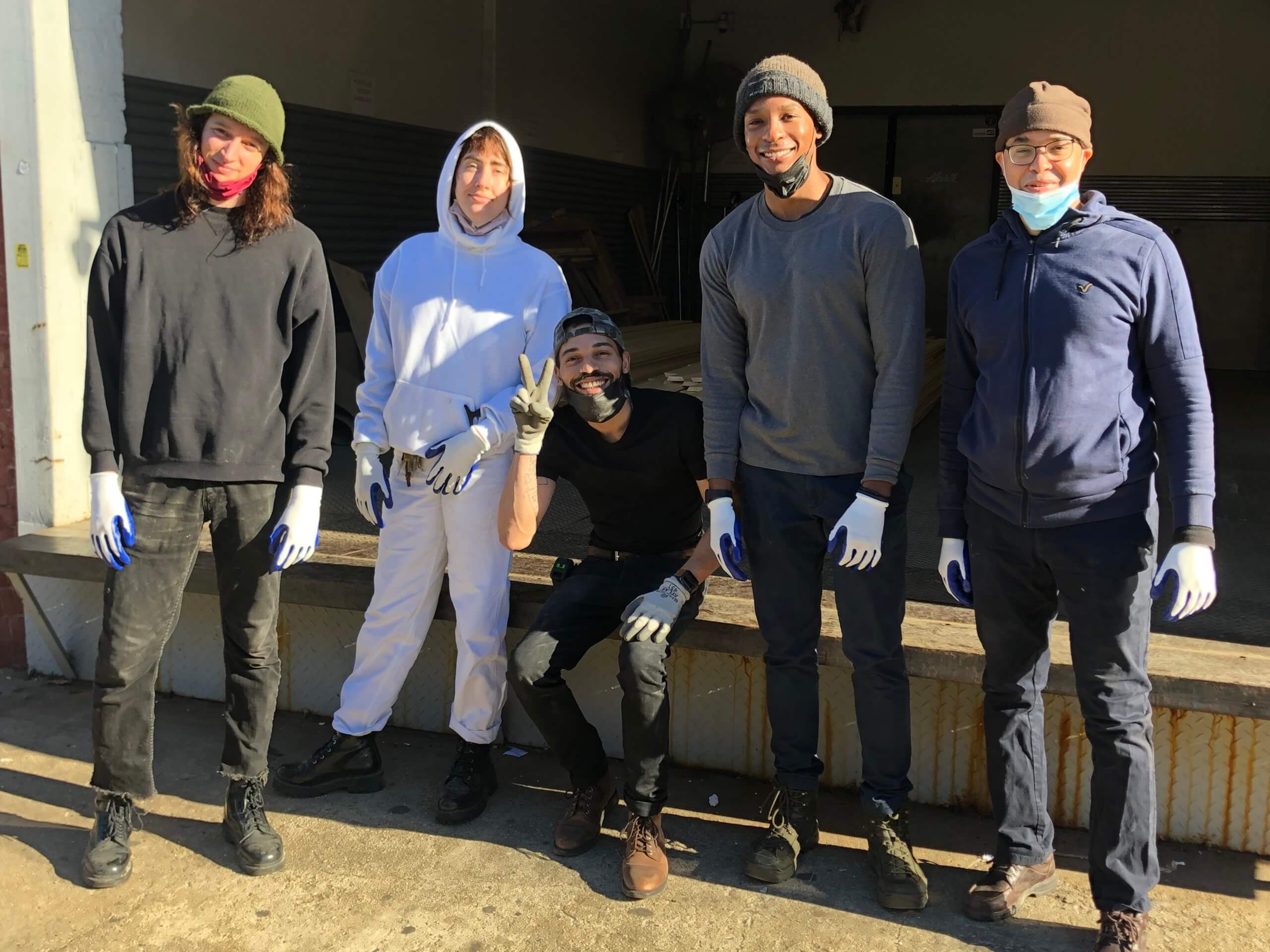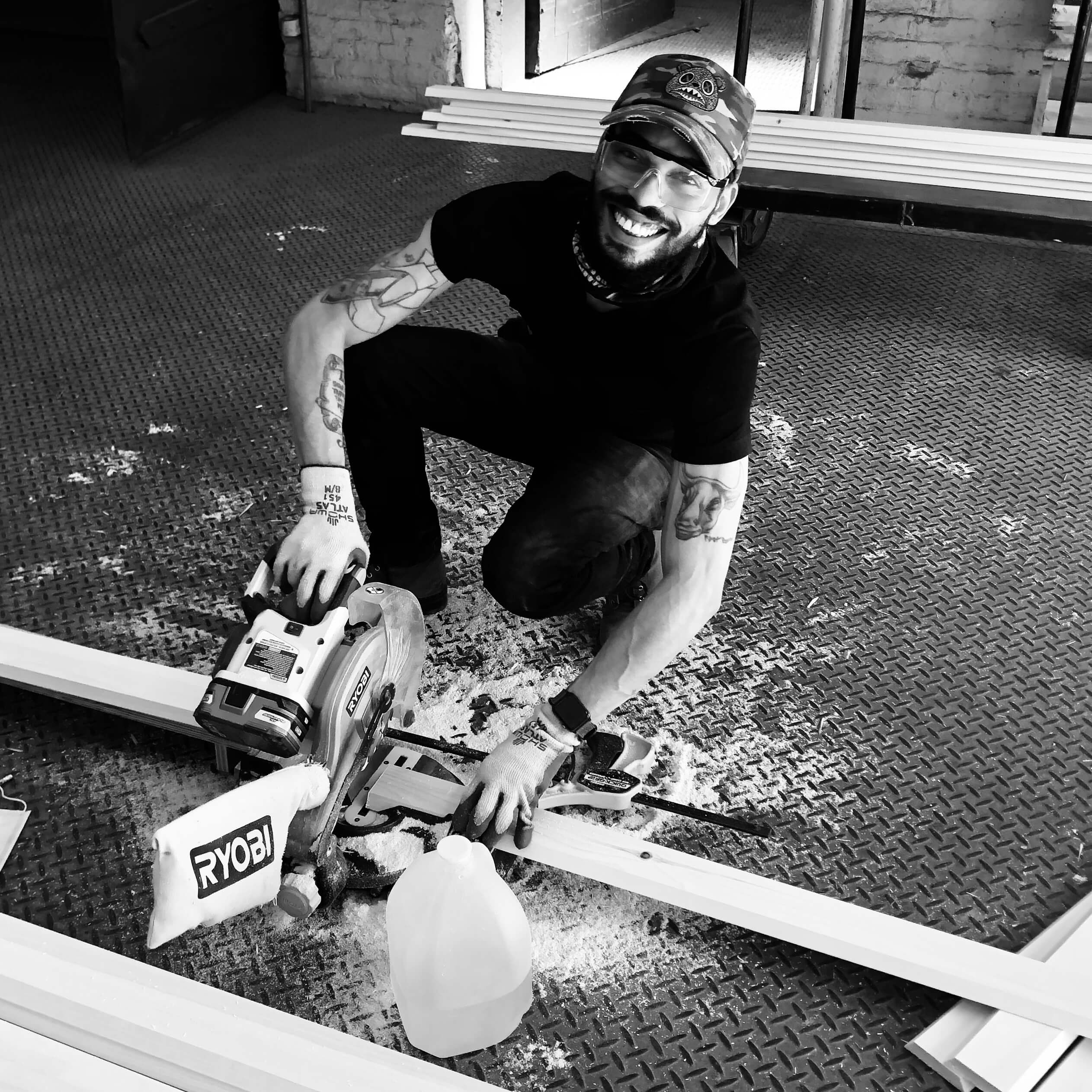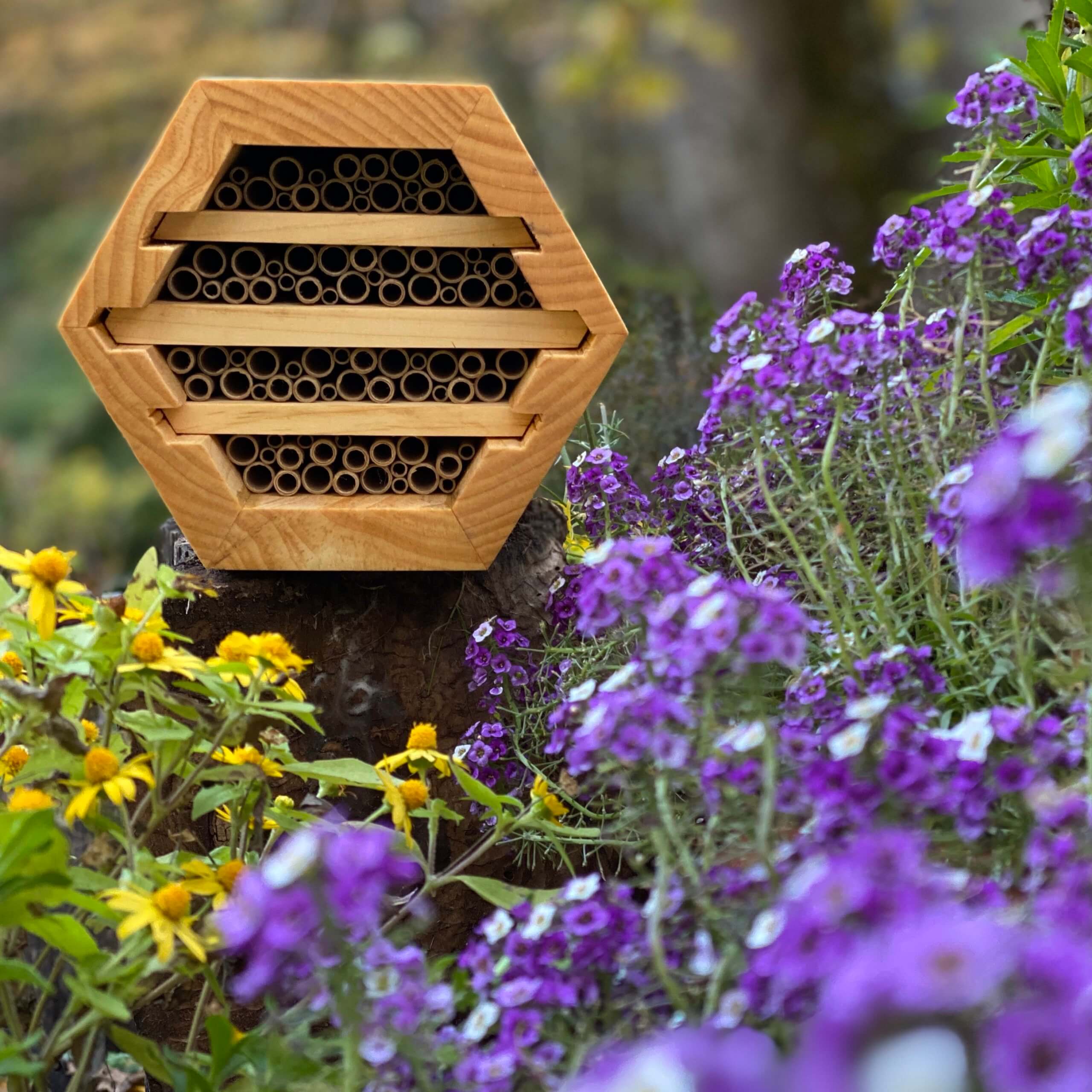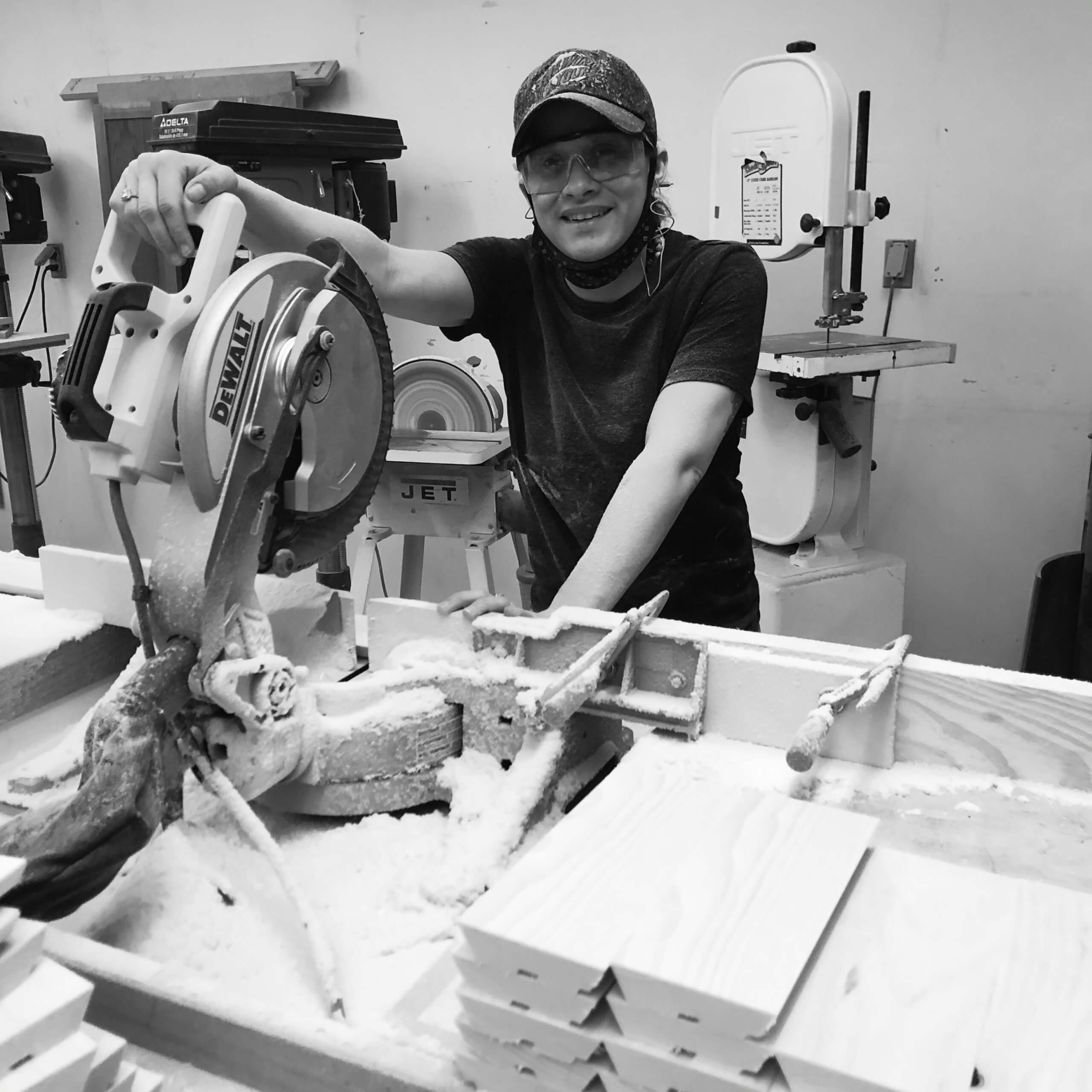
Members of the Brooklyn Woods team on a break from building native bee houses.
Taking Flight
A few months ago, Angelo Cintron worked a graveyard shift at a warehouse moving online orders for products including beeswax soaps and honey.
Now, he’s building native bee houses for The Bee Conservancy’s (TBC) Sponsor-a-Hive Program with his own hands — as part of a brand-new career that he has dreamed about for years.
The 31-year-old Woodhaven, Queens, resident is a recent graduate of Brooklyn Woods, a program that trains low-income and unemployed New Yorkers for jobs in woodworking and fabrication. One of his first paid gigs in that fledgling career is with the team tapped to build 750 custom-designed native bee houses for TBC’s flagship program, which awards schools, gardens, and other community groups across the U.S. and Canada the gift of bee homes to help bolster local ecology.
“The fact that I can build a career and build something that’s going to be useful for the environment is very exciting,” said Cintron. This opportunity “gave me a second chance to get on my feet and do what I want to do, and do what I love,” he said.

Angelo Cintron cutting pine for our bee houses.
Bee the Solution
The Bee Conservancy’s primary mission is to combat an environmental crisis that has left one in four of North America’s 4000 bee species at risk of extinction. Unlike honey bees, which exist in colonies numbering in the 10s of thousands and live in hives, most native bees live a more solitary existence. About 70 percent of them nest underground, and the remaining 30 percent nest in cavities or holes in wood or hollow broken stems. The Sponsor-a-Hive native bee houses provide a safe space for species like mason, leaf cutter, and small carpenter bees to live while providing their pollinating magic. There is also a second major goal behind TBC’s work: To simultaneously empower underserved communities.Designed With Bees and Sustainability in Mind
Designed in collaboration with artisan Cornelius Schmid to maximize bee health and ease of maintenance, the native bee homes are constructed with Forest Stewardship Council (FSC) certified, sustainably-sourced pine wood. The tubes that line the native bee houses serve as mini “apartments” for its buzzing inhabitants come from bee tube partner Crown Bees.
“Sponsor-a-Hive isn’t just about protecting bees,” says Rebecca Louie, TBC’s managing director. “It’s about bringing people together to engage with nature, grow food and community bonds, and build growth opportunities in the green sector.”
There’s a lesson from the boards and the bees: Important causes can slot together like so many intricately cut pine pieces. The end result is all about building an ecosystem of sorts—one that improves the lives of humans, as well as bees.

TBC’s exclusive native bee house, designed with bee health, hygiene, and ease-of-use in mind.
Pursuing Dreams
When Christine Baerga, 30, got the offer to join the Brooklyn Woods team making the native bee houses, the call couldn’t have come at a better time.
“I fell on some hard times at the end of last year and I had to move into a shelter,” said Baerga, who graduated from Brooklyn Woods last March. “I have this big dream of working with myself and being my own boss, and I’ve been working at that dream for a couple of years. But, I had to put that on hold because of what happened to me. I was just praying for the right job when [Brooklyn Woods] reached out saying that they had an opening. I was just like — wow!”
Then Baerga found out what they were making.
“I sanded down and stained wood pieces today and then when they told me what they were for, I was like, ‘Yes!,’ because I love nature,” she says. “You have to save the bees, because without bees there are not going to be people.”

Similarly, Sara Hutchins finds the impact of their work on this project incredibly powerful. Back in Boston, Hutchins toiled as an assistant stage manager building sets, but dreamed of building something more sustainable, pun intended, for a long-term career. They moved to New York in 2019 and soon found their way to Brooklyn Woods and the bee house team. “I have always liked helping others, in any way that I can,” said Hutchins, 27. “It’s cool to know that something we are making will be used to help in environmental ways, too. It’s a part of something bigger and greater.” Brooklyn Woods is one of the skill-training programs offered by Brooklyn Workforce Innovations, a nonprofit workforce development organization for individuals who have often been left out of other opportunities. Ninety six percent of those served by the Brooklyn Workforce Innovations’ programs, which include training in careers as varied as film production and commercial driving, are people of color; 23 percent are immigrants; 32 percent of trainees have been unemployed for a year or more. Learning new skills at Brooklyn Woods empowered Jennifer Vargas, 26, to make a jump from a clerical position to a dream woodworking career — all while raising a young child. Vargas hopes to one day be established enough as a wood-worker herself to build her own platform to help underserved neighborhoods. “I’m a big believer in uplifting the community, especially black and brown neighborhoods as they tend to be forgotten,” said Vargas. “I’ve seen first hand the benefits that come from programs like Brooklyn Woods and I want to be able to participate in that, either by teaching others, offering job opportunities, or being able to build homes for low income individuals who will then go on and contribute in giving back.” .